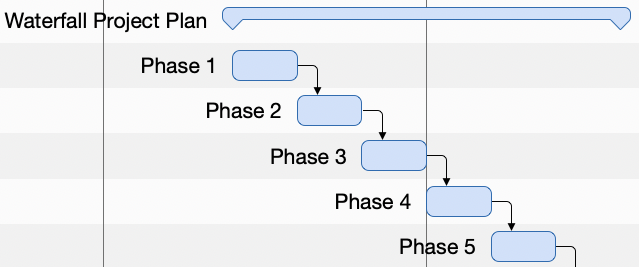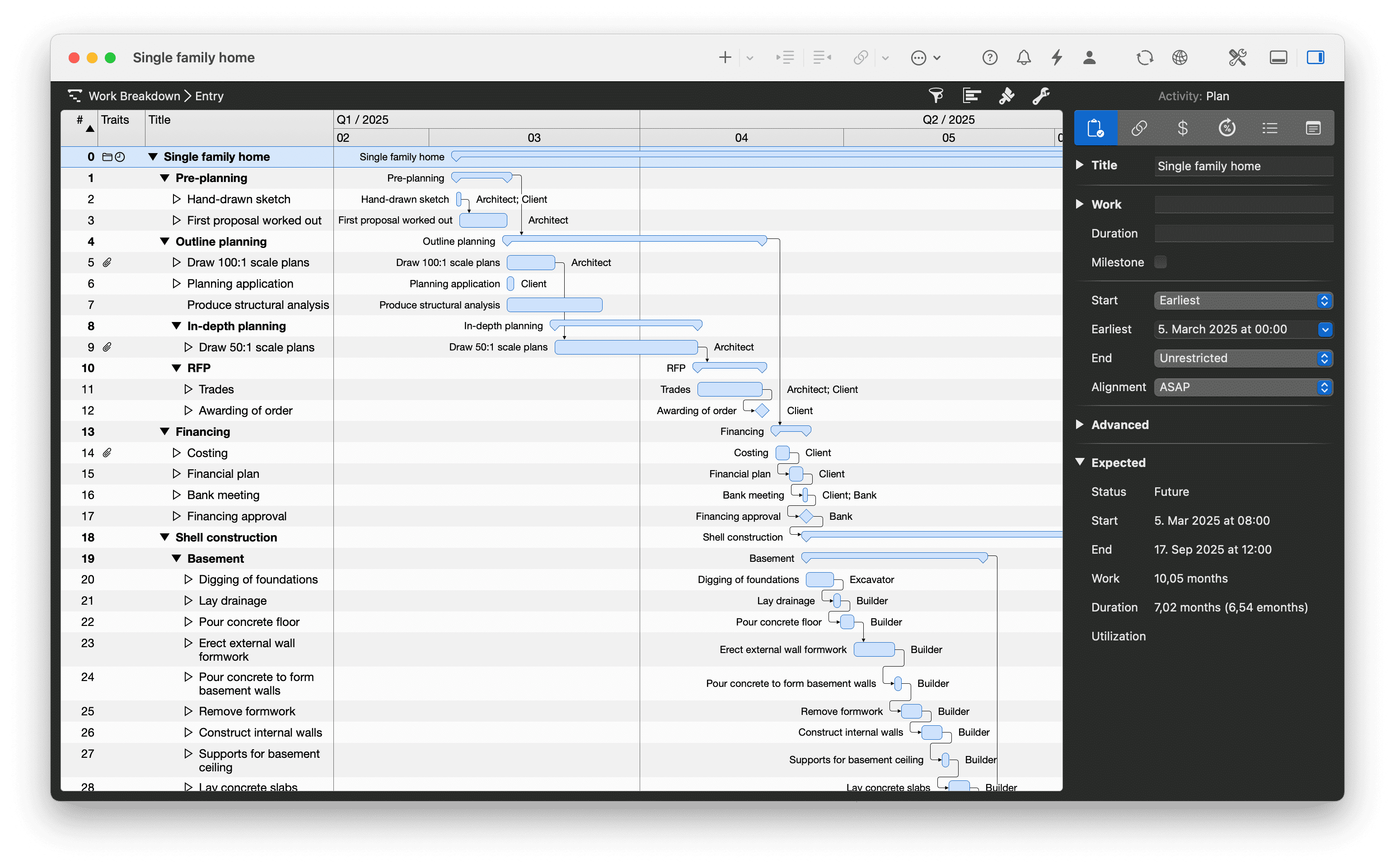Gestion de Projet avec une Touche de Magie
Planifiez, pilotez et livrez vos projets efficacement. Merlin Project pour macOS et iOS

En gestion de projets, certains termes étranges apparaissent lorsque vous recherchez une méthodologie adaptée à votre équipe : chemin critique, Scrum, PMBOK, Six Sigma etc. En plus de tous ces termes, vous avez certainement entendu parler de la méthode de gestion de projets en cascade.
Dans ce guide, vous apprendrez comment la méthode en cascade utilise un processus séquentiel pour simplifier la gestion de projets et comment vous pouvez intégrer certains aspects de cette méthode dans votre propre travail.
Qu'est-ce que le modèle en cascade en gestion de projets ?
Les phases du projet dans le modèle en cascade - Un exemple
Avantages et inconvénients du modèle en cascade
Pour quels projets le modèle en cascade est-il adapté ?
Agile Waterfall n'est pas une insulte - Grâce à Merlin Project
Le concept de base du modèle en cascade est clairement indiqué par son nom. En d'autres termes, la méthodologie en cascade est un processus séquentiel et linéaire de gestion de projets. Elle se compose de plusieurs phases indépendantes. Un projet se déroule d'une phase à l'autre, chaque phase achevée en déclenche une nouvelle.
Le modèle en cascade trouve son origine dans le processus de construction et de production, où des procédures hautement structurées doivent être suivies, car des modifications tardives sont coûteuses voire impossibles. Cette approche vise à produire le meilleur produit final possible avec peu de flexibilité pour des modifications une fois le produit terminé.
La construction d'une maison est un exemple concret d'un tel modèle en cascade. Les étages doivent être construits l'un après l'autre : d'abord le sous-sol, puis les étages et enfin le toit. Vous ne pouvez pas poser le toit sans avoir d'abord construit la maison vous-même.

Dans le modèle en cascade, les phases individuelles d'un processus de développement se succèdent en cascade. Chaque phase se termine par un résultat intermédiaire (jalon) – par exemple, avec un catalogue de besoins sous forme de fiche de spécifications, avec la spécification d'une architecture logicielle ou avec une application en phase alpha ou bêta.
Comme la technologie moderne nous permet aujourd'hui d'utiliser des méthodes plus flexibles, d'autres méthodes, plus agiles, sont désormais largement utilisées pour le développement de logiciels et d'autres produits, mais la méthode en cascade exerce toujours une grande influence.
Les modèles en cascade sont principalement utilisés pour des projets où les exigences et les processus peuvent être décrits avec précision lors de la phase de planification et où l'on peut supposer que les hypothèses ne changeront que légèrement au cours du projet. Les modèles de processus strictement linéaires conviennent donc principalement aux projets logiciels petits, simples et clairement structurés.
Si vous soupçonnez que les exigences pourraient changer pendant la production ou qu'une révision est nécessaire, une approche agile est plus adaptée à votre projet. En réalité, la plupart des développements logiciels entrent dans cette catégorie. Les tests en fin de cycle rendent toute révision très contraignante. En fait, les fervents défenseurs du système en cascade soutiendraient qu'un besoin de révision signifie que les exigences pour le produit n'étaient pas claires et que le projet doit donc revenir à la première phase.
La gestion de projets ne pourrait pas être plus simple que dans la vue Kanban : rassemblez vos tâches dans la colonne de gauche sous forme de cartes. Au fur et à mesure que le projet avance, déplacez-les vers la droite jusqu'à ce qu'elles finissent par se retrouver dans la colonne Terminées. Si vous alternez entre le tableau Kanban et la vue de répartition du travail Merlin Project, vous constaterez l'effet magique : les barres de Gantt se remplissent automatiquement. C'est de la gestion de projets hybride.
Vos idées, notre magie – Réalisez vos projets en toute simplicité!
Essayez maintenant gratuitement pendant 30 jours.
